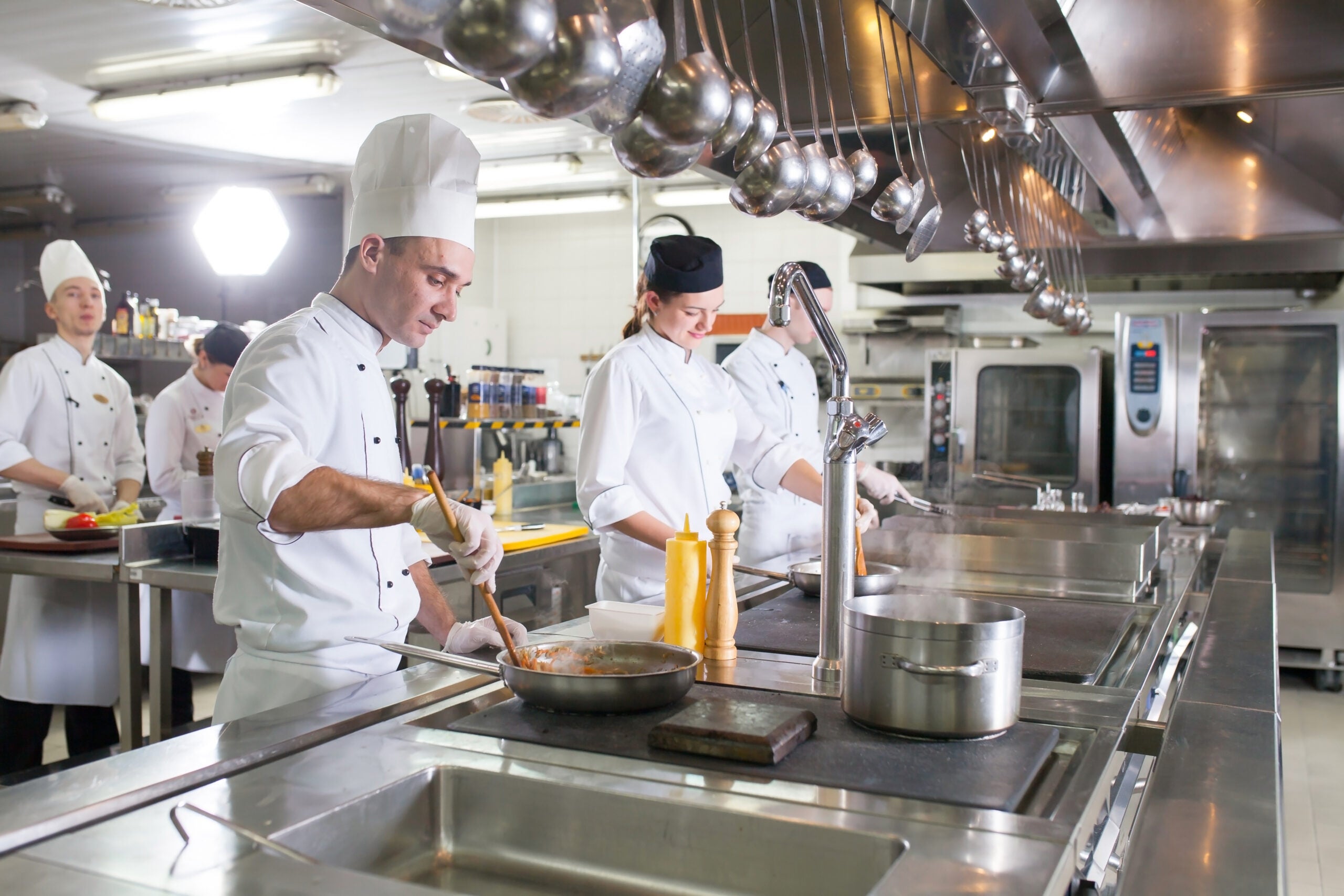
In the bustling world of culinary arts, commercial kitchens are the backbone of successful restaurants and catering businesses. Yet navigating the operation of these professional cooking spaces can be as challenging as mastering the perfect soufflé. Learn more about the most common pitfalls of commercial kitchens so you can avoid them in your own restaurants and food businesses.
Poor Kitchen Design and Layout
A poor kitchen design and layout can significantly hinder the efficiency and productivity of a commercial kitchen. When the flow of movement is obstructed or cluttered, it delays food preparation and increases the risk of accidents and injuries among staff. Furthermore, inadequately positioned appliances and workstations can cause cross-contamination. Besides operational inefficiencies, a poorly designed kitchen can also contribute to increased stress and dissatisfaction among the staff, potentially affecting the overall morale and resulting in higher turnover rates.
In contrast, a proper layout for a commercial kitchen prioritizes functionality, safety, and efficiency. An optimal design often follows the principles of the “kitchen triangle,” ensuring that the three most used workspaces—the refrigerator, stove, and sink—are positioned to minimize unnecessary movement. Furthermore, separating food preparation areas by the food type (e.g., meats, vegetables, and desserts) can prevent cross-contamination and streamline the cooking process. Lastly, sufficient storage and state-of-the-art cooking appliances can elevate the kitchen’s performance, ensuring the culinary team has the tools they need to excel.
Ineffective Communication and Inadequate Training
Ineffective communication and inadequate training in a commercial kitchen can lead to operational issues, compromising food quality and service efficiency. When kitchen staff are not adequately trained, it directly impacts their ability to perform tasks accurately and safely. Furthermore, a lack of clear communication channels exacerbates these issues, leading to confusion and misunderstandings among team members.
The path to mitigating these issues necessitates a proactive stance from leadership. Effective leaders recognize the importance of fostering clear communication channels and investing in comprehensive staff training programs. By embodying a culture of continuous improvement, leaders can inspire their teams to prioritize efficiency, safety, and culinary excellence. Remember, change begins with you.
Inefficient Refrigerated/Frozen Storage Solutions
 Inadequate refrigerated and frozen storage solutions can significantly compromise the integrity of a commercial kitchen, leading to severe repercussions for food safety and inventory management. Failure to maintain proper temperature controls increases the risk of foodborne illnesses and accelerates food spoilage, affecting the quality of ingredients available for use. This can have a domino effect the overall operation, where chefs are forced to discard unusable ingredients, elevating food costs and reducing profitability. Look for signs that you must replace your commercial refrigerators or freezers to avoid food quality issues before they become too severe.
Inadequate refrigerated and frozen storage solutions can significantly compromise the integrity of a commercial kitchen, leading to severe repercussions for food safety and inventory management. Failure to maintain proper temperature controls increases the risk of foodborne illnesses and accelerates food spoilage, affecting the quality of ingredients available for use. This can have a domino effect the overall operation, where chefs are forced to discard unusable ingredients, elevating food costs and reducing profitability. Look for signs that you must replace your commercial refrigerators or freezers to avoid food quality issues before they become too severe.
Navigating the complex landscape of commercial kitchen management requires vigilance, adaptability, and a commitment to excellence. By understanding and addressing the most common pitfalls of commercial kitchens, restaurant owners and food business operators can significantly enhance their operation’s overall efficiency and quality.
1266 Views












